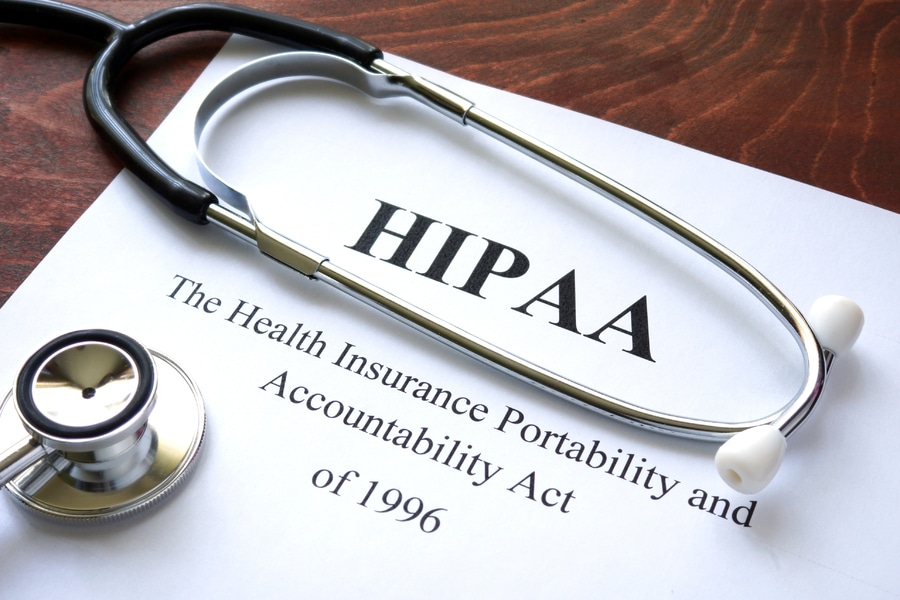
#Industry News
HIPAA-Compliant Technology: The Ultimate Guide
HIPAA is the most important piece of regulation in the healthcare industry. Learn how the right technology helps you maintain compliance with it.
In the world of healthcare, there are few regulations as important as the Healthcare Insurance Portability and Accountability Act (HIPAA). Ever since 1996, HIPAA compliance has been one of the highest priorities for healthcare providers and insurance companies.
In today's article, we explore technology's role in maintaining HIPAA compliance, review HIPAA's priorities and expectations, and discuss steps for implementing compliant solutions.
Understanding HIPAA Compliance
While HIPAA is complex and continuously updated, it can be summed up with three primary rules, all of which pertain to how companies handle the protected health information (PHI) of their patients and customers.
The Privacy Rule requires that PHI, such as medical records and patient plans, be shared only with authorized parties and often only with the patient's consent. The Privacy Rule also establishes that individuals have the right to access their PHI or request corrections.
The Security Rule lays out the standards for protecting PHI. The Security Rule requires administrative, physical, and digital safeguards for PHI, which makes HIPAA-compliant technology a critical concern for healthcare providers.
The Breach Notification Rule requires that HIPAA-covered entities notify their business associates and customers in the event of a data breach. Factors such as the extent of information involved, who accessed the information, and the risk associated with the compromised information all influence whether or not a notification must be sent out.
The Role of Technology in Ensuring HIPAA Compliance
Since HIPAA's implementation, digital health records have become the standard method for storing and transferring PHI. Of course, this also means that analog security measures like locks and keys became near-useless for protecting these digital records.
However, HIPAA compliance requires more than just subscribing to an EHR solution like Epic or Cerner. PHI-related technology must be implemented correctly and backed up with measures like RFID-enabled sign-in and automated logout. Staff must be trained on security and privacy measures, and data must be encrypted when not in use.
Even the tools that healthcare providers use must come with robust security features. Medical computers that use RFID or biometric technologies for access control, encryption services like Imprivata to protect data, and secure messaging formats to prevent interception all have their role in the healthcare world.
Criteria for HIPAA-Compliant Technology
To meet HIPAA standards for compliance, a piece of technology must implement multiple levels of protection for data stored, transmitted, or displayed, including:
Access control: This safeguard requires implementing technologies and policies that allow only authorized users to access PHI. Even then, they should only be able to access the minimum necessary to do their jobs. This often means unique log-in credentials and identification for every employee, automatically logging users out after a period of inactivity and encrypting data that is not currently in use.
Audit control: Another key component of HIPAA technology requirements is the ability to record and examine activity in information systems containing PHI. This allows auditors to investigate suspicious activity that could indicate a data breach.
Integrity control: Integrity control ensures that PHI files are not improperly altered or destroyed by accident or malicious actors. Proper integrity control can include mechanisms for authenticating changes to PHI and ways to roll back or nullify unauthorized changes.
Authentication: Authentication methods allow security systems to ensure that the person attempting to access PHI is who they say they are. This often requires something wholly unique to the individual and cannot be replicated, such as a smart card, a key with no duplicates, or the use of biometric information such as fingerprints or iris patterns.
Transmission security: Under HIPAA's Security Rule, data transmitted from one device to another must be securely encrypted. This ensures that even if the data is intercepted, it is useless to malicious actors. The rule also requires healthcare providers to implement measures that ensure transmitted PHI cannot be modified while in transit. Transmission security is vital for interoperability, which depends on being able to safely and securely share data between different groups.
Implementing HIPAA-Compliant Solutions
Having a well-considered plan is critical for achieving HIPAA compliance. When implementing any new piece of technology that falls under HIPAA regulations, consider the following steps that you'll need to follow.
1. Determine which HIPAA rules apply to your organization.
2. Appoint privacy and security officers whose job is to analyze HIPAA regulations and determine how to meet them.
3. Review what forms of personal health information your company uses and how they must be protected.
4. Create processes for reporting and responding to data breaches.
5. Develop and execute a risk assessment process to determine where your security systems are most vulnerable.
6. Stay up to date on changes to HIPAA regulations.
The most important thing when implementing new solutions is to stay active. You should always look for new and effective training methods, develop policies, and audit your existing methods for potential weaknesses or oversights.
The final part of this process is risk assessment, which entails testing your security and privacy defenses to identify any vulnerabilities. Once they've been spotted, your IT team can patch them and you can adjust your training methods accordingly.
Examples of HIPAA-Compliant Technology
HIPAA-compliant tools aren't just recommended; they're absolutely necessary. A proper medical-grade device will be designed with these regulations in mind. Examples of HIPAA-compliant technology include:
Medical-Grade Computers
A computer designed specifically for healthcare will feature design elements that adhere to HIPAA rules. For example, a medical computer can achieve access control by implementing RFID-controlled access, where an employee must scan their ID card at the computer's RFID reader before logging in and accessing a patient's records.
Imprivata Encryption
As previously mentioned, HIPAA requires that data be stored and transmitted in an encrypted format to prevent cybercriminals from accessing it. Imprivata's digital identity and encryption services fulfill this requirement and help ensure that even if a malicious actor downloads a patient's information, it will be useless to them.
Medical-Grade Tablets
Similar to their PC cousins, medical-grade tablets will implement access control features to prevent unauthorized individuals from using the device. This often takes the form of biometric security, such as fingerprint readers. Since fingerprints are unique to the individual, it is easy to limit access to only those with the correct fingerprints.
Privacy Screens
Privacy screens may be relatively low-tech, but they are an ideal solution for "visual hacking," where criminals access data simply by spotting it on a screen. A chemically polarized screen either built into a computer's monitor or attached to the front prevents anyone but the person currently using the computer from spying on the screen's contents.
Achieve HIPAA Compliance with Cybernet Computers and Tablets
With the use of digital technology becoming increasingly prevalent in healthcare, HIPAA's importance in the healthcare sector isn't changing anytime soon. Therefore, any new device must be designed and implemented with its requirements in mind.
If your organization is concerned with meeting HIPAA compliance and is looking for the tech to do so, contact the experts at Cybernet Manufacturing. We'd be happy to explain how our computers are designed with HIPAA compliance in mind and include features that help you maintain it.





